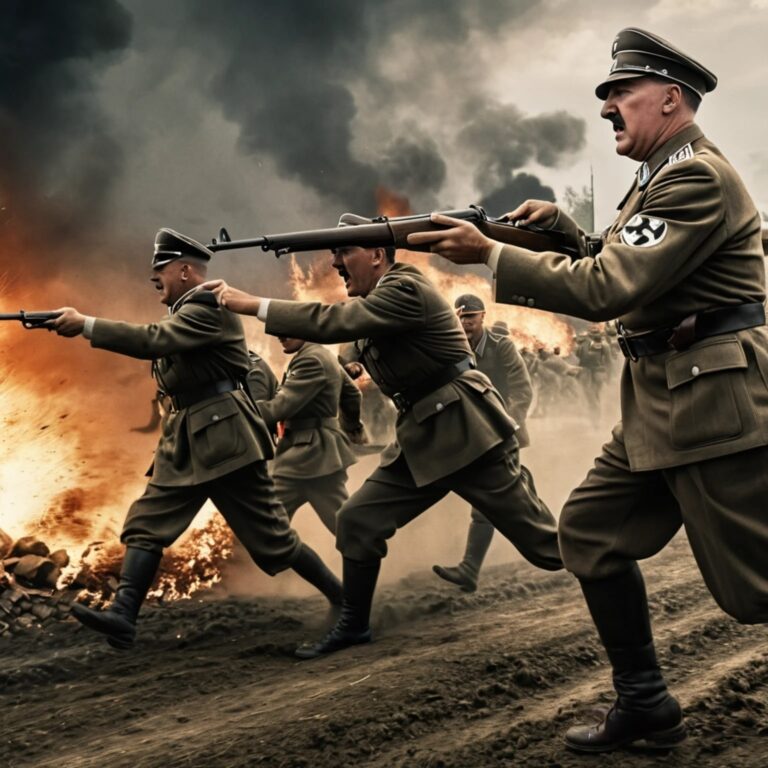Rise of Japan :Path to Pearl Harbour

The island nation of Japan, isolated from the rest of the world for much of its history till the 19th century, began a period of aggressive expansion of its empire in the early 20th century. Two successful wars, against China in 1894-1895 and the Russo-Japanese War in 1904-05, fuelled these ambitions, as did Japan’s successful participation in the First World War (1914-18) on the Allied side.But the success that Japan was enjoying came into the light of many successful powers of the time like US which generated tense rivalry for power game in the Pacific.
The roots of the conflict
While the deadly Japanese attack on Pearl Harbor shocked Americans, its roots go back more than four decades. As Japan industrialized in the late 19th-century post-Meiji restoration, when it opened its economy for trade, it sought to emulate Western countries such as the United States, which had established colonies in Asia and the Pacific to secure natural resources and markets for their products.
So, Japan spent most of its resources in the early 20th century modernizing its military and extracting natural resources to become great powers like the US and the UK.
However, Japan’s mainland lacked the resources to modernize the empire.
So, it led to thinking among the rulers of Japan about securing natural resources by expanding their empire.
However, Japan’s process of imperial expansion put it on a collision course with the United States, particularly concerning China.
In some ways, the conflict between the United States and Japan arose from their competing interests in Chinese markets and Asian natural resources. While the United States and Japan had peacefully competed for influence in East Asia for many years, the situation changed in 1931.
Japan’s oil supplies heavily relied on oil as more than 80 percent of its oil needs came from the US.
So, Japan devised northern and southern strategies to sustain its military campaign,
In northern strategies, they planned to invade Manchuria, a region entirely of fertile resources, the southern part of the Soviet Union, and some parts of Mongolia as they were coal—and iron-rich areas.
In North China, Japan installed a puppet government in Manchuria and renamed it Manchukuo. When a commission appointed by the League of Nations condemned the invasion, Japan withdrew from the international organization. He occupied Manchuria until 1945.
In the mid-1930s, they also invaded the Siberian region of the USSR and Manchuria, which led to a border dispute with the USSR.

This culminated in the massive battle of Khalkin Gol, in which the Soviets defeated the Japanese Imperial Army. After Hitler broke the non-aggression pact and invaded the Soviet Union, taking over Poland, this forced Japan to reconsider its decision to capture Siberia.
In southern strategies, the Japanese imperial navy struck into British Malaya and the Dutch East Indies to secure oil and natural rubber. Some British shops like HMS Prince and HMS Repulses were sunk off the coast of Malaysia by Japanese torpedo bombers.
Although war broke out between China and Japan in 1937, the stalemate situation in 1939 led to a lack of workforce and human resources. Japan had to look for someplace else for the resources they needed, so they also went to southward expansion.
Also, the United States refused to recognize the new regime or any other regime imposed on China under the Stimson Doctrine, named after Secretary of State and future Secretary of War Henry L. Stimson, which stated that any territorial expansion made forcefully would not be recognized.
Post WWI, The US adopted a nonofficial policy of intervention or making alliances in the first place. Also, they passed the Neutrality Act in 1935 to ban arms for sale to nations at war.
The ineffective Stimson Doctrine guided American policy in Asia for the next decade. On the one hand, the doctrine adopted a principled position in Favor of Chinese sovereignty and against an increasingly militaristic Japanese regime.
On the other hand, American companies continued to supply Japan with the steel and oil it needed for its fight against China long after the conflict between the two countries escalated into an all-out war in 1937.
However, a powerful isolationist movement in the United States responded to this statement. The nation had nothing to do with the international conflicts around the world.
Japanese historians estimate that anywhere between tens of thousands and 200,000 Chinese were killed. According to estimates by the International Military Tribunal for the Far East, over 200,000 Chinese people were killed, and roughly 20,000 Chinese women were raped by Japanese soldiers. These figures do not include the bodies that were destroyed by burning or were thrown into the Yangtze river.
The strong isolationist movement also influenced the United States’ initial attitude toward the war in Europe, where by the late 1940s, Nazi Germany controlled most of France, central Europe, Scandinavia, and North Africa and seriously threatened Britain.
The US act of isolationism amid Chaos in Europe and Japanese atrocities in China brought back gradually towards interventionism.
This led to the New Neutrality Act of 1939, which allowed the UK and France to supply arms and ammunition if they were paid for and picked up in their ships.
The Land Lease Act of 1941 allowed the US to lend or lease war supplies to any nation deemed “vital for the defense of the US,” including the US and China, which Japan considered a threat.
In September 1940, Japan signed the Tripartite Pact with Germany and Italy, the two fascist regimes then at war with the Allies.
Tokyo and Washington negotiated unsuccessfully for months before the attack on Pearl Harbor. While the United States hoped that embargoes on oil and other vital goods would cause Japan to stop its expansionism, sanctions and other punishments persuaded Japan to stand firm and fuelled its anger against continued Western interference in Asian affairs.
In its southern strategy, Japan tried to isolate China by cutting trade routes in the Indo-China region with the help of the Vichy French government. Still, we saw this as an act of aggression that could hamper their interests in the Pacific region.
It was coupled with Japan’s alliances with Italy and Germany, and the US embargoed iron, steel, and copper, which were essential to Japan.
But Japan did not stop as it moved south to control the Philippines and other regions. The US then decided to freeze Japanese assets in the US, followed by the UK and Netherlands, who controlled the Dutch East Indies to put their oil embargoes. This led to Japan being unable to purchase oil and suddenly losing almost 90 percent of its oil supplies.
In September 1940, Japan signed the Tripartite Pact with Germany and Italy, the two fascist regimes then at war with the Allies to fight against the Allied Nations.
The impending crisis
President Franklin Delano Roosevelt took such a step in July 1940, when he stopped shipments of scrap metal, steel, and aviation fuel to Japan while continuing to allow American oil to flow to the empire.
Japan responded by invading resource-rich French Indochina, with the approval of the government of Nazi-occupied France, and cementing its alliance with Germany and Italy as a member of the Axis powers.
Then, in July 1941, Japan advanced into southern Indochina as part of its southern strategy to prepare for an attack on British Malaya, a rice, rubber, and tin source, and the oil-rich Dutch East Indies. This led Roosevelt to freeze all Japanese assets in the United States on July 26, 1941, effectively cutting off Japan’s access to American oil.
The Attack
Tokyo and Washington negotiated unsuccessfully for months before the attack on Pearl Harbor. While the United States hoped that embargoes on oil and other vital goods would cause Japan to stop its expansionism, sanctions, and other punishments persuaded Japan to stand firm and fueled its anger against continued Western interference in Asian affairs.
War with the United States was inevitable for Japan to defend its status as a great world power. With the odds against him, his only chance was the element of surprise.
The destruction of Pearl Harbor would mean that Japan would control the Pacific.
By May 1940, the United States had made Pearl Harbor the main base of its Pacific Fleet. Because the Americans did not expect the Japanese to attack first in Hawaii, about 4,000 miles from the Japanese mainland, the Pearl Harbor base remained relatively undefended, making it an easy target.
On November 26, 1941, as American officials delivered a ten-point statement to the Japanese reaffirming their long-held position, the Imperial Japanese Navy ordered an armada of 414 aircraft to sail aboard six aircraft carriers.
According to a plan by Admiral Yamamoto Isoroku, who previously studied at Harvard and served as Japanese naval attaché in Washington, D.C. The flotilla was intended to destroy the US Pacific Fleet base at Pearl Harbor.
To surprise the Americans, the ships maintained strict radio silence during their 3,500-mile journey from Hitokappu Bay to a designated launch sector 230 miles north of the Hawaiian island of Oahu. At 6:00 a.m. on Sunday, December 7, a first wave of Japanese projects launched from the aircraft carriers, followed by a second wave an hour later.
Led by Captain Mitsuo Fuchida, the pilots detected the landing and took their attack positions around 7:30 a.m. Twenty-three minutes later, as his bomber hovered over the unsuspecting American ships docked in pairs on Pearl Harbor’s “Battleship Row,” Fuchida broke the radio silence and shouted, “Tora!” Torah!” (Tiger! Tiger! Tiger!): The coded message informing the Japanese fleet that it had surprised the Americans.
For nearly two hours, Japanese firepower rained down on American ships and soldiers and destroyed 8 battleships and more than 180 aircrafts. Although the attack caused significant destruction, the damage was mitigated by Japan’s failure to destroy American repair shops and fuel oil tanks. More importantly, there were no American aircraft carriers at Pearl Harbor that day.

However, immediately after they attacked Pearl Harbor, the Japanese continued attacks on American and British bases in the Philippines, Guam, Midway Island, Wake Island, Malaysia, and Hong Kong. Within days, the Japanese owned the Pacific region.
Shortly before Fuchida’s plans in Washington, a decrypted message alerted authorities that an attack was imminent. However, a communications delay prevented the warning from reaching Pearl Harbor. The Americans missed another opportunity when an officer ignored a report from an Oahu-based radar operator that a large number of shots were headed their way.
Roosevelt learned of the attack at the White House as he finished his lunch and prepared to tend to his stamp collection. He spent the rest of the afternoon getting updates and preparing the speech he planned to give Congress the next day.

On 8th December 1941, President Roosevelt gave his famous “infamy” speech in Congress, where he declared a formal declaration of war against Japan. Now, the policy of isolationism will change, and the US will become an active player as it gets ready to participate in World War 2 officially.
So, all resources and raw materials were quickly mobilized on a war footing.
The attacks on Pearl Harbor were just a short-term gain, but once the US had geared up its war machine, there was little hope of victory for Japan.
However, the attack on Pearl Harbor did not achieve its goal of destroying the Pacific Fleet. The Japanese bombers did not hit any oil tanks, ammunition sites, or repair facilities, and no American aircraft carriers were present during the attack.
In June 1942, this failure haunts the Japanese, as U.S. forces scored a significant victory in the Battle of Midway, decisively turning the tide of war in the Pacific.
Today, Pearl Harbour, one of the 11 military bases in Hawaii, has the USS Arizona Memorial with Aviation Museum and joint Airforce and Naval Base.




